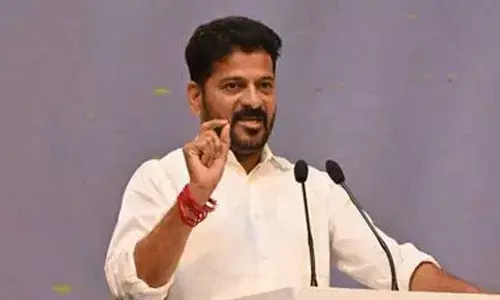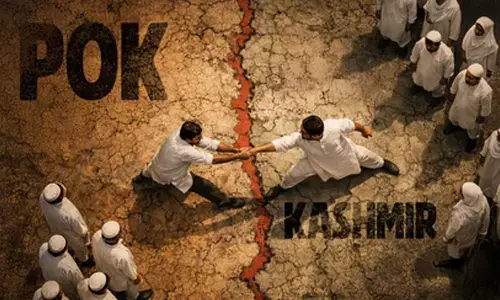PV Narasimha Rao's birth anniversary: Former PM Who Showed A New Way To Indian Economy

PV Narasimha Rao's birth anniversary: Former PM Who Showed A New Way To Indian Economy
PV Narasimha Rao, this name needs no introduction! He is the first leader to take the reins of the Prime Minister from the South, the genius who put the country's economy on the track with reforms, known as Apara Chanakya who effectively ran the minority government for five years
PV Narasimha Rao, this name needs no introduction! He is the first leader to take the reins of the Prime Minister from the South, the genius who put the country's economy on the track with reforms, known as Apara Chanakya who effectively ran the minority government for five years, a multilingual person who can speak nine Indian languages as well as 8 foreign languages fluently, what not a lot more to describe this intellectual.
PV Narasimha Rao was born on 28 June 1921 to Ruknabai and Sitharama Rao in Laknepalli village of Narsampet Mandal, Warangal District, Andhra Pradesh. Pamulaparthi Ranga Rao and Rukminiamma of Bhimadevarapalli Mandal in Karimnagar district adopted him at the age of about three and since become Pamulaparthi Venkata Narasimha Rao. PV completed his primary education in the Warangal and Karimnagar districts. During his degree days at Osmania University, in 1938, he joined the Hyderabad State Congress Party and sang the Vande Mataram song in defiance of the Nizam's government ban.
After his expulsion from OU, he joined Nagpur University with the help of a friend and stayed at his home in Nagpur, studying LLB from 1940 to 1944. As a follower of Swami Ramanandatirtha and Ramakrishna Rao of Burgula, PV took part in the freedom struggle and the liberation struggle of Hyderabad. He joined the Congress party as a disciple of the Bourgeoisie and worked with the then young Congress Leaders Marri Chenna Reddy, Sankara Rao Chavan and Virendra Patil. In 1951, he became a member of the All India Congress Committee.
PV entered Andhra Pradesh politics in 1957 getting elected to the Legislative Assembly from the Manthani constituency. Elected four times in a row from the same constituency, he first became a minister in 1962 and served as minister of Justice and Information from 1962 to 1964, Minister of Justice and Revenue from 1964 to 1967, Minister of Medical and Health in 1967 and Minister of Justice and Information from 1968–71 respectively.
PV Narasimha Rao had a special place in the politics of Andhra Pradesh at a time when caste dominance and party dominance were rampant. As a Brahmin, he does not seem to have a strong political position in the caste. PV rose to the highest level in state politics and garnered admiration from all sections of people. After the separate Telangana movement of 1969, in view of the sentiment of the people of Telangana, it was inevitable for the Congress party to elect a Telangana leader as its CM and his non-controversial personality and non-sectarian political background led Rao to become the Chief Minister on September 30, 1971.
Narasimha Rao served as chief minister for a short duration as the dissent arose in the party as the coastal Andhra and Rayalaseema leaders, concerned over the Supreme Court verdict on Mulki rules and launched the Jai Andhra movement seeking a separate Andhra state. Andhra and Rayalaseema leaders accused PV of being biased towards Telangana leaders. Many of the ministers in the area resigned as part of the movement. With this, on January 8, 1973, the PV cabinet was reorganized with new members. However, centre dissolved the state government and imposed presidential rule and thus ended the tenure of the PV as Chief Minister.
PV was first elected to the Lok Sabha in 1977. Twice he has won from Hanamkonda, two more times from Rantek in Maharashtra, Nandyal in AP in 1991 and Brahmapur in Odisha in 1998. Between 1980–1989 he held the Home, Foreign and Human Resource Development Departments at the Centre. The assassination of Rajiv Gandhi at that time left the Congress party without a significant leader. Having no special group of his own at the time, PV was chosen as prime minister because he seemed acceptable to all. However, as he was not an MP at the time, Gangula Pratapa Reddy, who had won the 1991 general election from Nandyal Lok Sabha constituency in Andhra Pradesh, resigned from the Congress party and withdrew from the by-election and PV won that election. He completed a five-year term of office with diplomacy even though his government did not have an absolute majority. As soon as he took the oath as the Prime Minister, PV made reforms in regard to the economy.
He died on December 23, 2004, at All India Institute of Medical Sciences with coronary failure. Rao's body was not allowed inside the AICC building in Delhi nor given a site for his cremation within the capital. A memorial was built for PV Narasimha Rao located adjacent to Sanjeevaiah Park, developed in 2005 on 2.9 acres of land known as PV Gyan Bhoomi
Despite serving the country and known for his economic reforms, PV Narasimha Rao did not get any recognition. During the monsoon assembly session 2020, the Telangana government put forward a resolution that proposed Bharat Ratna for PV Narasimha Rao. The government also flagged off PV Narasimha Rao's centenary celebrations on his birth anniversary.














